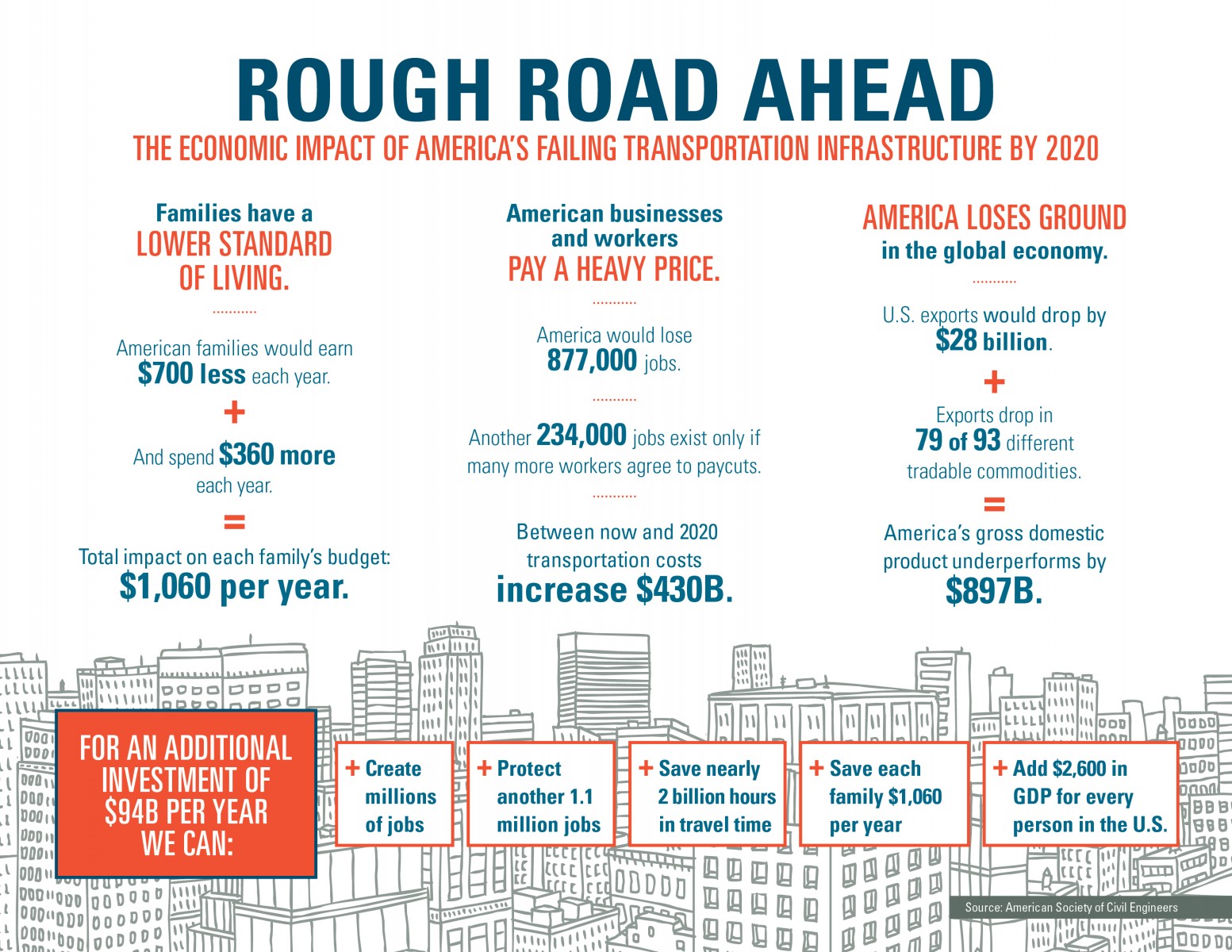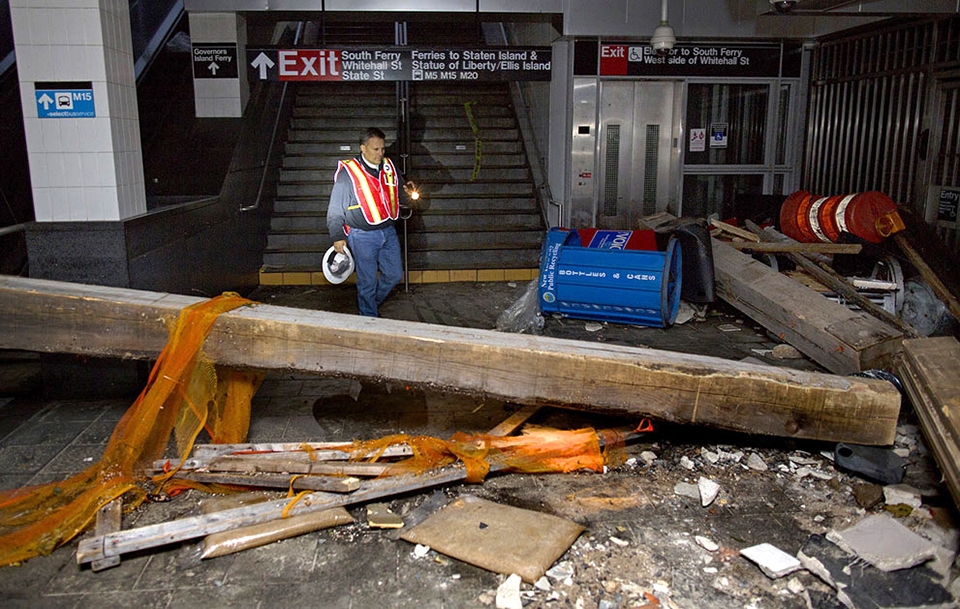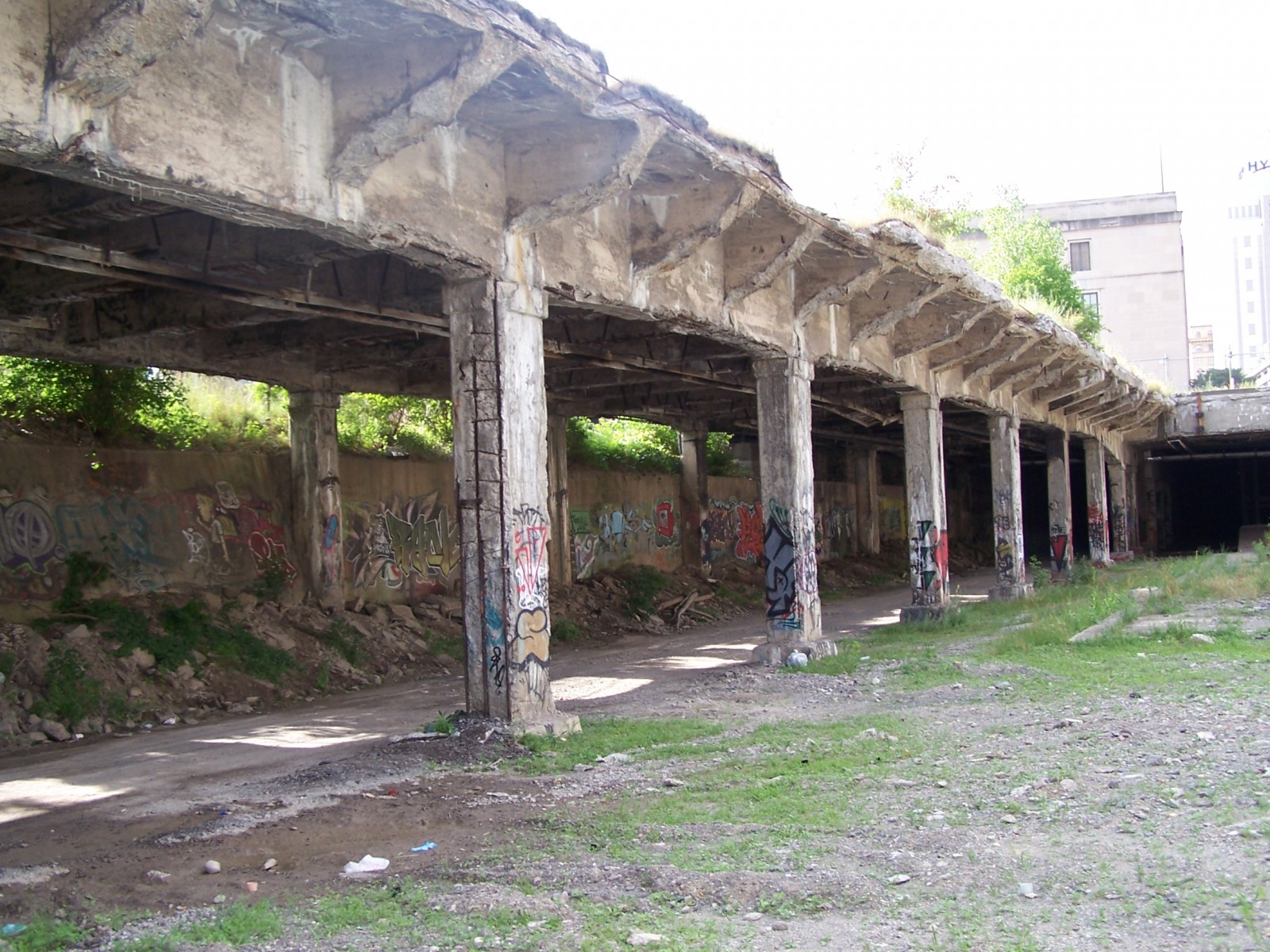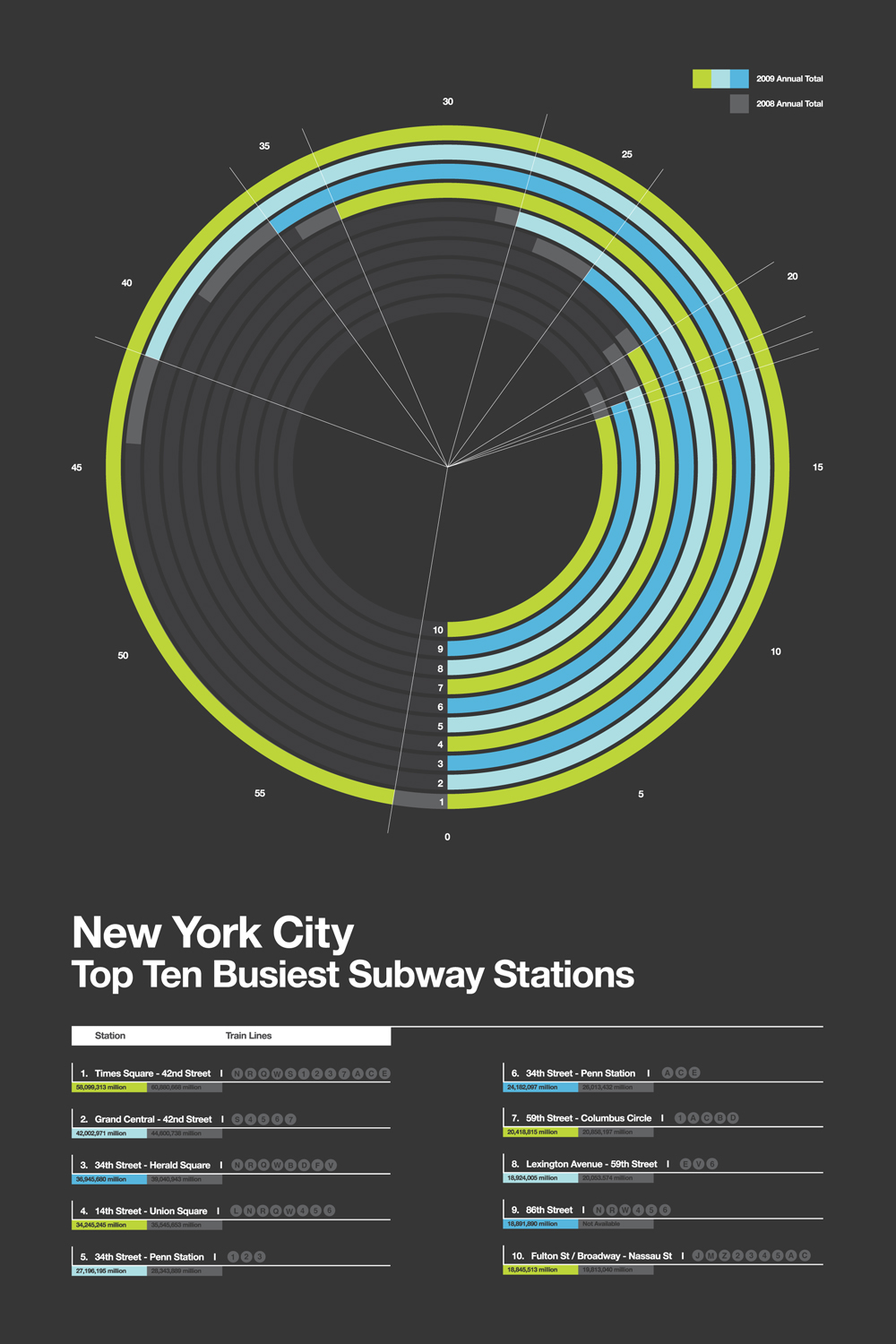
The deterioration of the nation’s public transportation, like the deterioration of health care, education, social services, public utilities, bridges and roads, is part of the relentless seizing and harvesting of public resources and programs by corporations.
These corporations are steadily stripping the American infrastructure. Public-sector unions are being broken. Wages and benefits are being slashed. Workers are forced to put in longer hours in unsafe workplaces, often jeopardizing public safety. The communities that need public services most are losing them, and where public service is continued it is reduced or substandard and costlier.
Only the security and surveillance network and the military are permitted to function with efficiency in their role as the guardians of corporate power. We now resemble the developing world: We have small pockets of obscene wealth, ailing infrastructure and public service, huge swaths of grinding poverty, and militarized police and internal security.
The assault on public transportation, which has devastating consequences for the poor who cannot get to work or the doctor’s office without it, is not new. General Motors, Standard Oil, Firestone Tire and Rubber, B.F. Phillips Petroleum and Mack Manufacturing set up companies in the 1930s—first United Cities Motor Transit and later National City Lines—in order to rip up city trolley tracks and replace them with bus and car routes.
These corporations, joined by companies such as Greyhound, pushed through the national highway grid. City bus companies, as riders turned to cars, began to go bankrupt. The federal government in 1964 approved the Urban Mass Transit Act, which provided capital and operating funds for mass transit to keep it on life support.
The corporations, meanwhile, pushed through huge urban renewal plans, all funded by the taxpayer, which focused exclusively on highways, tunnels and bridges and further sidelined public transportation. Jane Jacobs, who wrote the 1961 book “The Death and Life of Great American Cities,” presciently understood and fought these corporate forces, led in New York City by Robert Moses, who forcibly displaced hundreds of thousands of residents and demolished neighborhoods to cater to the demands of the car and fossil fuel industries. Robert A. Caro in his biography of Moses, “The Power Broker,” exposed this relentless process in depressing detail.
This process of destroying our public transportation system is largely complete. Our bus and rail system, compared to Europe’s or Japan’s, is a joke. But an even more insidious process has begun. Multinational corporations, many of them foreign, are slowly consolidating transportation systems into a few private hands. Of the top three multinationals that control transport in the U.S. only one, MV Transportation, is based here.
FirstGroup, a multibillion-dollar corporation headquartered in the United Kingdom and a product of Margaret Thatcher’s privatization of British mass transit, now owns First Student, which operates 54,000 school buses in 38 states and nine Canadian provinces and has 6 million student riders. FirstGroup also has a controlling stake in Greyhound. Veolia Transportation, a subsidiary of Transdev, a conglomerate headquartered in France, has 150 contracts to run mass transit systems in the United States.
It was Veolia, after Hurricane Katrina, that took over the New Orleans bus system. And Veolia did what it has done elsewhere. It stripped bus workers of their pensions. New York’s Nassau County bus service, once part of the Metropolitan Transportation Authority (MTA), was turned over to Veolia after the French corporation hired former three-term Sen. Al D’Amato of New York as its lobbyist.
Veolia—which when it takes over a U.S. property, as in New Orleans or Nassau County, refuses to give workers a defined-benefit plan—is partly owned by a pension fund that covers one-third of French citizens. U.S. workers are losing their benefit plans to a company created to provide benefit plans for the French. Veolia is currently lobbying Rhode Island and Atlanta to privatize their bus services.
“Our money is meaningless in politics,” Larry Hanley, the international president of the Amalgamated Transit Union (ATU), lamented when we met in his office here in Washington. “It is still sought after, but it really has no weight in determining anything.”
“For 50 years we have been trained to negotiate, trained to litigate, trained to arbitrate, trained to legislate, all the things society requires of a good, well-trained, well-groomed union,” Hanley said. “And then all of a sudden they said, guess what, we are going to pull the plug. You are no longer even going to have the right to negotiate. We are going to take away your bargaining rights. What good is it to have 500 well-trained officers in my union who know how to arbitrate a grievance when you haven’t got a contract and you have no grievance procedure?”
The battles in towns and cities across the country usually pit 100 or 200 beleaguered union workers in a local bus system against a powerful multinational and its lobbyists in firms such as Patton Boggs. Former Sen. Trent Lott of Mississippi and Rodney Slater, a secretary of transportation under Bill Clinton, work for these multinational transportation firms as Patton Boggs lobbyists.
Armed with buckets of corporate cash, Lott and Slater lobbied the Senate last year to insert a call for privatization into a highway bill on behalf of the multinational corporations. The provision, which was inserted without hearings, public debate, documented evidence or prior approval by either the House or the Senate, mandates the federal government to undertake feasibility studies to privatize the nation’s mass transit on behalf of French, British and American transportation corporations.
“This gives state and local governments political cover to privatize,” Robert Molofsky, the general counsel for the ATU, said of the provision when we spoke at the union’s headquarters. “This is the second time that the Congress and the MTA have tried to do this. In the late 1980s and early 1990s under Reagan and Bush they tried but these guidances were repealed in 1994. When you look at what was repealed in 1994 and what has been implemented again in this bill, it is the same thing. We now, in effect, have a mandate from Congress for the federal government to provide the resources, studies, reports and expertise to assist private corporations to take over public transit. The federal government has become the marketing arm for these corporations.”
The $8.5 billion stimulus package for public transportation, largely because of Larry Summers’ insistence, did not provide any money to fund operating costs for public transportation. This meant that city public bus services, which must operate on declining local tax revenue, could do little more with the stimulus money than work on infrastructure.
“I am watching as 80 percent of transit systems have had to raise fares or cut service since the recession and then this money is used to build the bosses new bathrooms or buy them new cars,” Hanley said. “What it speaks to is a really stupid policy on national transit.”
Engineering firms and the construction industry, including the construction trade unions, aggressively lobby for federal dollars in transit, but they make sure the money goes to real estate developers or corporations that build bridges and tunnels rather than to expand service, pay operating costs or cut fares. The nation’s senior transit officials often leave office to lobby for these same real estate developers and construction firms. When Christopher Boylan, who was the deputy executive director of the NYS Metropolitan Transportation Authority, the nation’s largest transit system, retired in 2010 he went to work as a lobbyist for the General Contractors Association of New York.
“These are the worst conditions for mass transit since the Depression,” Hanley said. “The MTA is raising fares while it is cutting services in New York, including routes they have been running for 100 years.”
The wreckage of the nation’s public transportation system is staggering. Greyhound, before government deregulation in the 1980s, had 20,000 unionized members. It now has 2,500. The company, before deregulation, along with Trailways ran a national bus network that provided public transportation to towns and remote corners of the country. But once the bus industry was deregulated, companies such as Greyhound and Trailways were no longer required to serve remote or poor areas.
Pensions and wages, especially as new nonunionized bus companies arose, were reduced. Greyhound bus drivers, once the highest paid in the country—in the 1970s their yearly pay was more than $100,000 adjusted for inflation—now make between $40,000 and $50,000 annually. And the company has eliminated perhaps as much as 80 percent of its former nationwide service.
Many bus drivers no longer work full time. And a loophole in federal law exempts intercity bus drivers from Fair Labor Standards Act overtime provisions, which, in essence, forces many of them to work second jobs during their “rest periods” to survive financially. There were some 3,000 bus companies in the country four decades ago. Today there are 152,000. Most of these companies have only a few buses. Companies such as Fung Wah, with its $15 fares for trips between Boston and New York, often have no vehicle maintenance plans. They do not use central fuel depots, instead buying fuel on the highway so there is no record of their mileage. Fung Wah was pulled off the road in February after a series of crashes.
Public transportation is increasingly part of the underground economy. Working conditions are punishing and often unsafe. When Fung Wah’s fleet of 28 buses was finally grounded a few weeks ago, for example, it was revealed that three-quarters of the vehicles had cracks in the frames. Three times as many passengers and workers over the last five years were killed in bus accidents than plane crashes.
The driver for one Canadian bus company, Mi Joo Tour & Travel, crashed in Oregon last Dec. 30 after falling asleep at the wheel, killing nine people and injuring 39. The driver, it was discovered, had driven 92 hours in the seven days before the crash. These fly-by-night bus companies, union officials say, are little more than “sweatshops on wheels.”
“People now have to drive a bus 100 hours a week to make a living,” Hanley said. “The limit is 70, but there are a number of ways the drivers are forced to break the law. The industry is producing more and more crashes. Greyhound has terminals all over the country that cost them money to support. In New York they have to go into the Port Authority with their buses. The Chinatown companies show up and they have no requirements to go into terminals and pay terminal fees. They have no ticket sales because they do it all online. They have no baggage handlers. And they pay people off the books in many cases.
People have been caught driving these buses with no license. The buses have caught fire and turned over on the highway. We had an accident in the Bronx a year and a half ago that was so gruesome the first responders needed grief counseling. … The driver fell asleep. Whenever you hear about one of these buses rolling off the highway I can tell you with 95 percent certainty that the driver fell asleep. And they are falling asleep because they are working long hours.”
According to the National Transportation Safety Board, 36 percent of motorcoach crash fatalities over the past decade have been due to driver fatigue. It is the No. 1 cause of fatal accidents, far above road conditions, which account for only 2 percent, or inattention, 6 percent. Legislators, federal agencies and carriers, however, refuse to address the problem of driver fatigue. The ATU is working to push through the Driver Fatigue Prevention Act (S. 487), sponsored by Sen. Chuck Schumer of New York, which would ensure that drivers would be paid fairly for the work they perform above 40 hours per week, making them less inclined to work other jobs or otherwise dangerously push themselves at the wheel. But the bill, like most that seek to stem the tide of corporate dominance, is headed into the buzz saw of corporate power.
The only hope, Hanley said, is the creation of rider groups in towns and cities to save public transportation, especially with bus industry deregulation occurring in Canada, where his union represents many thousands of drivers. The union, with 120,000 members, is not strong enough to do it alone, he said. Hanley maintains that communities have to save their public transportation systems because no politician, Republican or Democrat, is prepared to step in and do it for them; the government officials are too beholden to corporate money. But with 10 million riders a day on public buses, Hanley said, there is the potential for organizing, as riders’ groups such as Americans for Transit are attempting to do.
Hanley pointed proudly to the union’s outreach to community and church groups to save bus service last year in Weston, Wis., a town of 15,000. Weston’s Village Council, as part of austerity cuts, had voted to eliminate local bus service. A broad coalition of groups organized to get an advisory vote put on the ballot to block the council’s decision. It was the same ballot on which Gov. Scott Walker, a foe of organized labor and a proponent of the austerity cuts, faced recall. Walker won his fight in the state and in Weston to stay in office. But about 65 percent of those who went to the polls in Weston, many of whom voted not to recall Walker, voted to protect their bus service.
“This was not a partisan issue,” Hanley said. “It was not about Republican or Democrat, recall or don’t recall. It was about the quality of life in our communities. And when we got that message across we won.”
3 WAYS TO SHOW YOUR SUPPORT
- Log in to post comments


















